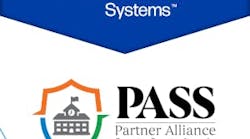Oct. 4--Since the killings at Columbine High School seven years ago, schools have locked their doors, posted adults at entryways and drilled students in emergency procedures.
The result, say experts, has been an increase in safety, but there remains little that can be done to stop a distraught outsider intent on killing children.
William Pollack, a Harvard University professor who has done studies of school shootings, estimates that a child in this country has a one-in-a-million chance of being shot in an attack or suicide at a school.
"It is horrible, but it is minuscule," he said.
Fights and stabbings, in which one student targets another, remain the most common form of violence in schools. Students who kill indiscriminately are far more rare, occurring on average only eight or nine times a year across the country.
Even rarer is the type of shootings perpetrated by adults that occurred in Colorado and Pennsylvania over the past week.
But if parents and teachers overreact to the events of the past week by locking schools down -- requiring students to go through metal detectors and installing other security devices -- they are likely to traumatize children, Pollack said.
The best way to prevent school killings is for teachers and administrators to establish an atmosphere of trust so students report promptly signs of danger, whether troubled students or intruders, said Kenneth S. Trump, president of National School Safety and Security Services of Cleveland.
"There is no perfect security, but the first and best line of defense is a well-trained and highly alert teacher and student body," Trump said.
His organization tracks news reports of school-related violent deaths, from suicides to mass killings. Since Columbine, the group says, 219 people have died violently in or on their way to schools, or at school-sponsored events.
The annual totals range from a high of 49 in the 2003-2004 school year to a low of 16 the year before. Last year there were 27 killings and suicides.
While urban schools would seem to be more prone to school shootings, in fact, such violence rarely occurs there. The most infamous shootings have occurred in rural and suburban schools where parents, teachers and principals don't believe violence will ever happen.
"It has been our experience that there has been a heightened sense of preparedness in urban schools, but in suburban and rural schools there is a mind-set that 'It can't happen here,'" Trump said.
Monday's shootings in Pennsylvania reverberated throughout the region yesterday, prompting several Maryland school systems to re-examine their security procedures.
Carroll County public schools -- which currently leave the doors unlocked at front entrances -- might consider locking all school entrances, according to Larry Faries, coordinator of security for the system.
"You want schools to be a welcoming environment. But given the state of affairs, I don't know if we can do it," Faries said.
Police presence
In Anne Arundel County, Superintendent Kevin M. Maxwell visited several county schools yesterday to look at security measures and asked county police to increase the number of times they drive by schools during the day.
Maxwell also told principals to review their security procedures.
Patricia Bonney, executive director of the Highlands School, a private school serving children with learning difficulties in Street, Harford County, said, "We have always had deadbolt locks on the doors, and we have always had the emergency policies in place.
"But this latest incident hits so close to home and it's so fresh in everyone's mind, we decided that we need to practice the drills."
In Washington, President Bush ordered Attorney General Alberto R. Gonzales and Secretary of Education Margaret Spellings to convene a summit of leading authorities to write recommendations to states to improve school safety.
Sen. Barbara Boxer, a Democrat from California, is writing legislation that would authorize giving local schools funding to prevent violence and ensure safety, a spokeswoman said. The grants could be used to hire police officers, establish tip lines and purchase metal detectors and surveillance cameras.
Danger signs
Researchers have looked for ways to prevent mass violence ever since two students opened fire and killed classmates and a teacher at Columbine outside Denver.
Among their conclusions: Youthful perpetrators of violence often display similar characteristics that educators can be trained to detect, Pollack said. The troubled youths often have emotional problems, have tried to harm someone at school before and commonly talk about maiming or hurting people a week or two before the incident.
They also appear to be depressed, he said.
In addition, Pollack said, students who know the perpetrators told researchers they didn't report the warning signs to adults because they feared they would not be taken seriously or their classmates would get punished rather than helped.
In some cases, they said they thought it would be fruitless to report the behavior because teachers had ignored bullying and teasing in the past.
Those conclusions, Pollack said, have led some schools to work on creating a climate in which students feel safe to express their worries about other students.
"The best protection are the eyes and ears of the kids and students and teachers connected to them," Pollack said.
In several cases in recent years, students have turned in classmates -- preventing potential violence.
Since Columbine, many schools have created plans to help students with emotional difficulties, said Kathleen Buzad, an assistant director at the American Federation of Teachers.
"It is our opinion that schools are safer in the nation than ever before," Buzad said.
Yesterday, parents around the region acknowledged the horror of the Lancaster shootings but said they would not live in fear of such a thing happening to their children.
"If someone wants to do something bad, the reality is that no amount of security can prevent that," said Lucinda Peters, a Howard County parent.
"But I do not send my kids to school every day wondering that they will be killed and won't come home," she said. "They are as safe as they can be."
For the most part, parents interviewed at area schools yesterday said they feel their children are safe.
"Schools are generally fairly secure," said Kama Dwyer, 35, as she spent an afternoon with her children at Rodgers Forge Tot Lot. But "part of the lesson is that it could happen anywhere," Dwyer said.
In Baltimore County, most schools lock doors, although police Capt. Thomas Busch, the schools' liaison, said it is harder to keep high schools secure because students have more freedom to come and go during the day. Sometimes doors get propped open, he said.
"It's a free and open society, and there are risks that are associated with that," Busch said. "I don't think our schools should be fortresses. They should be open for students to feel free and safe to come into."
Baltimore City public schools, too, keep their doors locked at all times.
Margaret Gold, education director of religious school for Temple Isaiah in Fulton, said her 500-student school remains locked almost the entire day.
"We are a Jewish facility, so we feel an extra necessity to be vigilant," Gold said.
Sun reporters Sandy Alexander, Anica Butler, John-John Williams, Jonathan D. Rockoff, Arin Gencer and Laura McCandlish and freelancer Cassandra A. Fortin contributed to this article.
Copyright (c) 2006, The Baltimore Sun Distributed by McClatchy-Tribune Business News.


